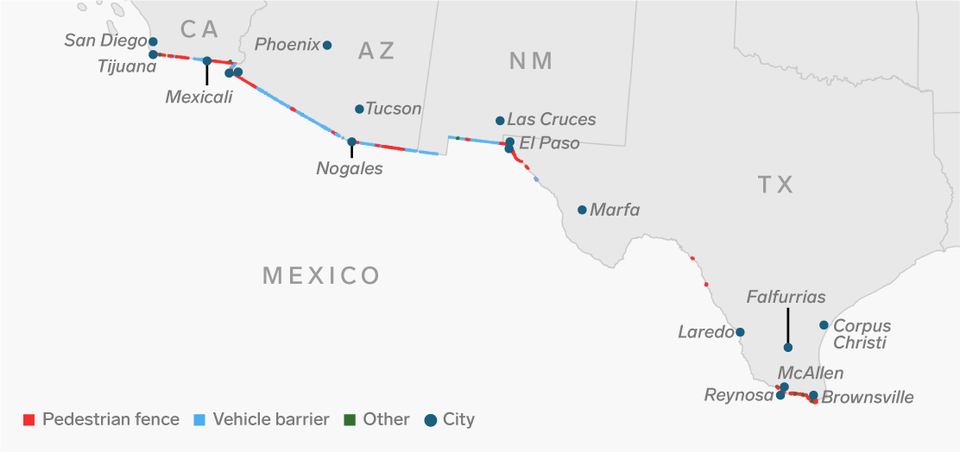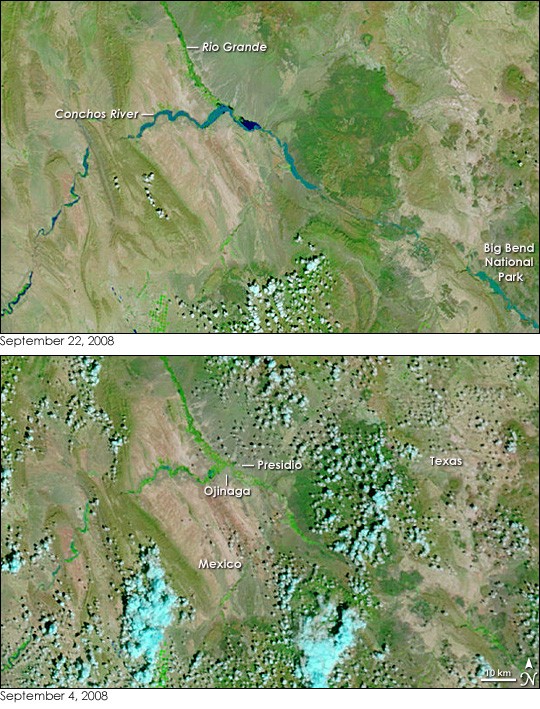Much of the government has been shut down for more than 16 days because President Donald Trump insists that Congress fund a border wall that is both a terrible idea and illegal.
The shutdown is because Trump demands extending the existing border walls and barriers to vast areas that make no sense largely because they are in the Rio Grande floodplain. Building barriers in that floodplain was such a problematic idea that a 1970 treaty between United States and Mexico explicitly bans them.
“The president really doesn’t understand the issue,” House Armed Services Committee Chair Rep. Adam Smith (D-WA) told ABC’s George Stephanopoulos on Sunday. “But we have actually already built a wall across much of the border, and all border security experts that I talk to say, where a wall makes sense, it’s already been built.”

As the map shows, the overwhelming majority of the border, where there isn’t some form of barrier, runs straight down the middle of 1,254 snaking miles of the enormous Rio Grande River.
But the Rio Grande routinely floods. In fact, as ThinkProgress previously reported, flooding has gotten more frequent and more severe in recent years thanks to climate change.
The Trump administration’s own National Climate Assessment concluded in November that “record-breaking flooding events increased over the past 30 years” in the Southern Great Plains (Texas, Oklahoma and Kansas) — and that extreme flooding events are only going to get worse.
But putting barriers in the Rio Grande floodplain was actually banned long before countries started worrying about climate change.
The 1970 “Treaty to Resolve Pending Boundary Differences and Maintain the Rio Grande and Colorado River as the International Boundary” states that the joint U.S.-Mexico International Boundary and Water Commission (IBWC) “must approve construction of works proposed in either country” along those rivers. It explicitly prohibits the construction of projects “which, in the judgment of the commission, may cause deflection or obstruction of the normal flow of the river or of its flood flows.”
If Trump flagrantly violates the treaty to build his wall, not only will it lead to court challenges, but it will worsen relations with the very country we need to work with if the United States is to improve the border situation.
If it’s not a solid wall, the president has recently suggested the wall could be a “steel slat barrier.” But even steel fencing and barriers are problematic because in a flood they turn into dams that can greatly worsen local flooding.
Indeed, as the Arizona Daily Star reported in 2008, a 5-mile border fence constructed along Organ Pipe Cactus National Monument’s southern border “became a dam” during a flash flood that year.
A 17-page U.S. Interior Department report at the time concluded that because of the fencing, water that normally flowed north to south ended up flowing laterally. As the Daily Star summed it up: “A wash directly west of Lukeville flowed more than 200 feet along the fence and through the port of entry at the international border, causing flood damage to private property, government offices and businesses.”
And that was just a tiny fence during a relatively small flash flood. What happens when a barrier is built that has to withstand floods along the Rio Grande that are so vast they can be seen from outer space — like those from September 2008, captured by NASA’s Terra satellite?

As these events make clear, it’s impractical to build the wall or barrier right next to a huge river like the Rio Grande that increasingly floods. This means it would need to be placed far from the river, potentially miles away.
But as a viral video from former Rep. Beto O’Rourke (D-TX) recently pointed out, that means the border would “Block access to the Rio Grande” and require seizing vast amounts of land from Texans through eminent domain, which in turn would “Exile hundreds of thousands of acres of the U.S. to a no mans land between the river and the wall.”
The bottom line is that building a concrete or steel wall or barrier along the Rio Grande River is a terrible and illegal idea. And yet, the president is shutting down much of the federal government simply because Congress won’t fund it.

